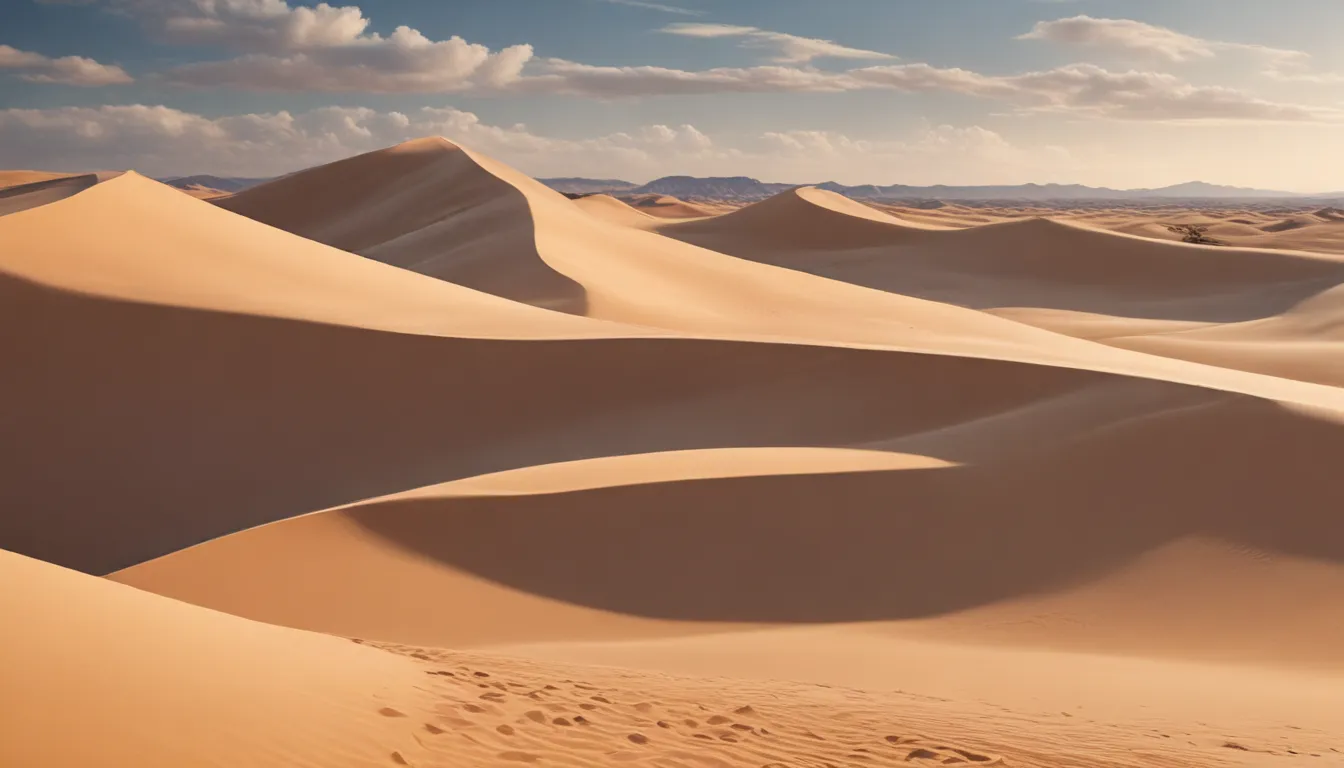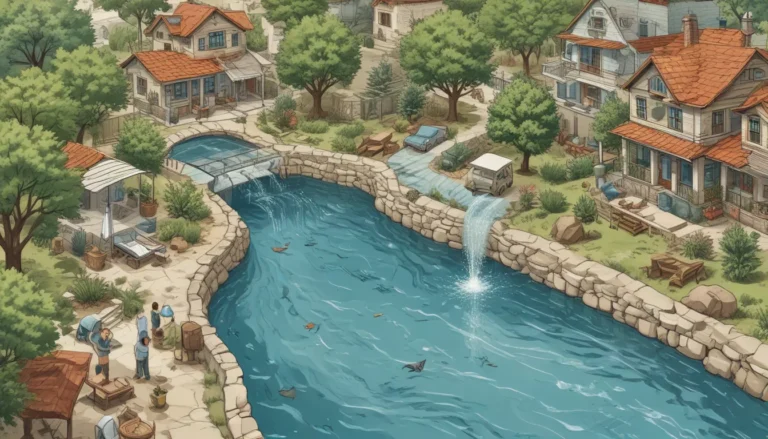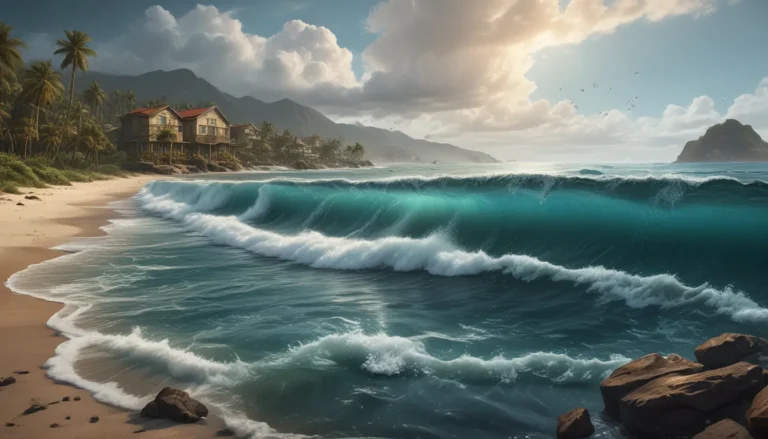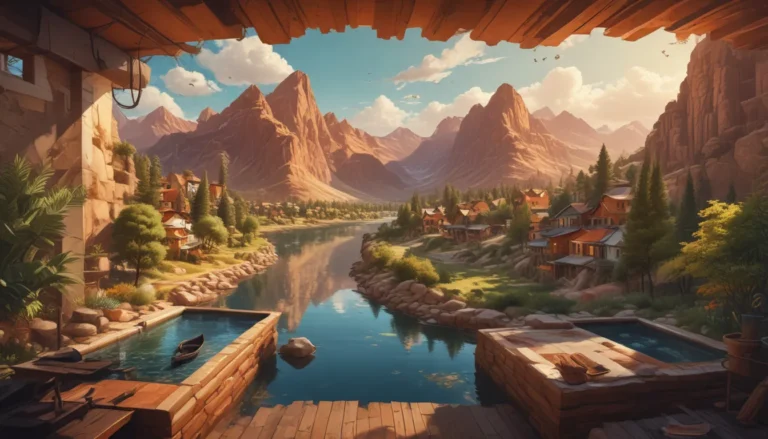A Note About Images: The images used in our articles are for illustration purposes only and may not exactly match the content. They are meant to engage readers, but the text should be relied upon for accurate information.
Sand dunes have a mysterious allure that captures our imagination, with their striking beauty and unique characteristics found in various parts of the world. Whether nestled in deserts or stretching along coastal regions, these dynamic formations of sand never fail to impress adventurers and nature enthusiasts alike.
Unveiling the Wonders of Sand Dunes
Sand dunes are not merely piles of sand; they are dynamic structures that can reach staggering heights of over 1,000 feet, showcasing nature’s incredible sculpting ability. These majestic formations come in a variety of shapes and sizes, from crescent-shaped dunes to star dunes, each with its own captivating allure. What’s more, sand dunes are not static but rather migrate across the land, constantly reshaping the environment through the movement of sand particles driven by wind patterns.
The Symphony of the Sands: Singing Sands Phenomenon
One of the most mesmerizing phenomena associated with sand dunes is the “singing sands.” Under specific conditions, when sand grains rub against each other, it creates a hauntingly beautiful low-frequency hum or musical tone as the wind blows across the dunes. This mysterious natural soundtrack adds an enchanting element to the already captivating landscape of sand dunes.
A Haven for Life: Sand Dunes’ Ecological Importance
Despite their harsh appearance, sand dunes are home to a diverse array of plant and animal species that have adapted to thrive in these challenging conditions. From specialized plants with long roots that tap into underground water sources to animals employing unique survival strategies, these ecosystems teem with life. Additionally, sand dunes play a crucial role in protecting coastal areas, acting as natural barriers against storms and erosion, safeguarding both ecosystems and human settlements.
From the Silver Screen to Natural Wonders: Sand Dunes’ Pop Culture Presence
Sand dunes have not only captivated nature enthusiasts but also filmmakers who have used these stunning landscapes as backdrops for iconic movies. From the vast Sahara Desert in “Lawrence of Arabia” to the iconic dunes of Death Valley in “Star Wars,” sand dunes have provided awe-inspiring settings for some of cinema’s most memorable scenes. Their unique beauty and cinematic appeal have made them popular stars in the world of entertainment.
Unveiling the Artistry of Nature: Sand Dunes as Natural Works of Art
The intricate patterns and textures found in sand dunes are a testament to nature’s artistry, creating visually captivating landscapes with sweeping curves and ridges. The interplay of light and shadow across these formations offers a mesmerizing visual experience that has inspired photographers and artists to capture the unique beauty of sand dunes. Each ripple and ridge tells a story of wind and time, forming an ever-evolving masterpiece in the sands.
Embark on a Journey Through Sand Dunes
In conclusion, sand dunes are more than just sandy landscapes; they are living, breathing works of art that showcase the wonders of nature. Whether you are seeking an adrenaline rush or a moment of quiet contemplation, exploring sand dunes promises a truly enriching experience. Plan your next adventure to a sandy desert or coastal region, and immerse yourself in the enchanting world of sand dunes.
FAQs: Unraveling the Mysteries of Sand Dunes
-
How are sand dunes formed?
Sand dunes are formed through the interaction of wind, sand, and topography, with loose sand particles accumulating to create dunes when carried by the wind and deposited against obstacles. -
Can plants grow on sand dunes?
Certain plants have adapted to thrive in the harsh conditions of sand dunes, often with specialized root systems to stabilize the dunes and prevent erosion. -
How big can sand dunes get?
Sand dunes can vary in size, ranging from a few meters to over 500 meters in height in some of the world’s largest dune fields like the Sahara Desert. -
Are sand dunes always found in deserts?
While deserts are known for their sandy dunes, these formations can also be found in coastal regions and inland areas with sandy soil and strong winds. -
Do sand dunes move?
Yes, sand dunes are constantly on the move, shifting their positions over time due to the action of wind transporting and depositing sand particles in different locations. -
Are sand dunes home to unique wildlife?
Sand dunes support a diverse range of wildlife, from desert-adapted reptiles and insects to specialized plant species, all uniquely adapted to thrive in sandy environments. -
Can you participate in recreational activities on sand dunes?
Sand dunes offer numerous recreational opportunities, including sandboarding, dune bashing, camel riding, beachcombing, and dune hiking, catering to adventurers and nature lovers alike. -
How can sand dunes be protected?
Conservation efforts and responsible tourism play a vital role in preserving sand dunes, with education, regulation, and sustainable practices key to ensuring the long-term survival of these natural wonders.
Explore, Learn, and Discover with Us
Each fact presented on our site is contributed by individuals like you, ensuring a diverse and authentic collection of insights and information. Our dedicated editors meticulously review each submission to uphold the highest standards of accuracy and reliability, guaranteeing that the facts shared are both captivating and credible. Trust in our commitment to quality as you delve into the fascinating world of sand dunes, and prepare to be amazed by the wonders that await you.





